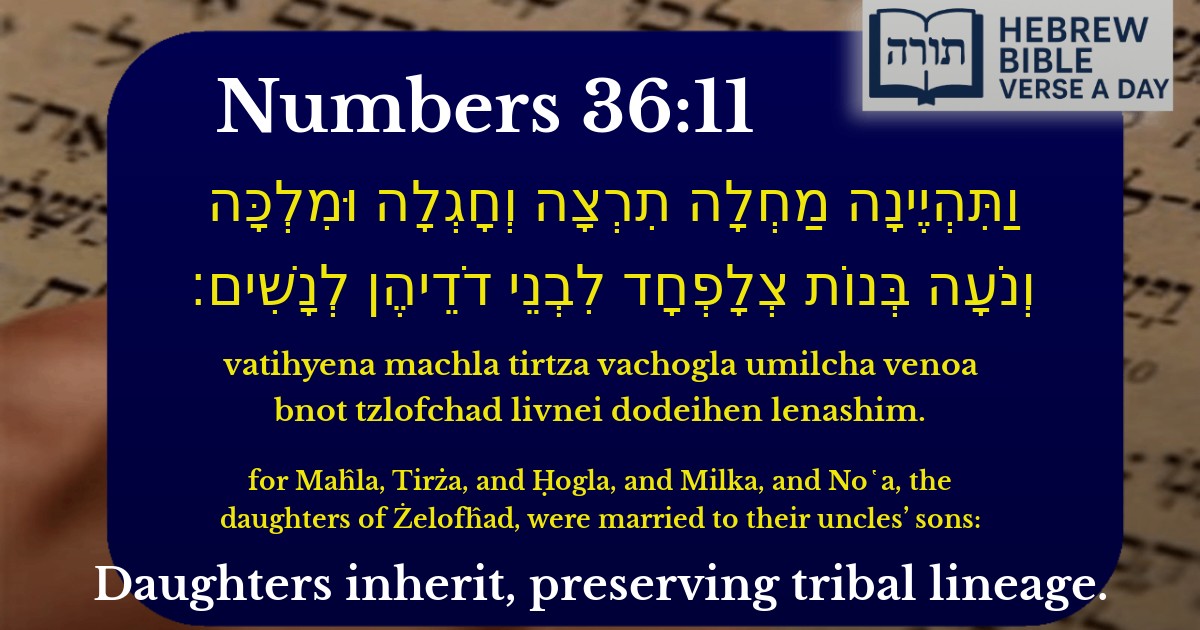Join Our Newsletter To Be Informed When New Videos Are Posted
Join the thousands of fellow Studends who rely on our videos to learn how to read the bible in Hebrew for free!
Hebrew Text
וַתִּהְיֶינָה מַחְלָה תִרְצָה וְחָגְלָה וּמִלְכָּה וְנֹעָה בְּנוֹת צְלָפְחָד לִבְנֵי דֹדֵיהֶן לְנָשִׁים׃
English Translation
for Maĥla, Tirża, and Ḥogla, and Milka, and No῾a, the daughters of Żelofĥad, were married to their uncles’ sons:
Transliteration
Vatihyena machla tirtza vachogla umilcha venoa bnot tzlofchad livnei dodeihen lenashim.
Hebrew Leining Text
וַתִּהְיֶ֜ינָה מַחְלָ֣ה תִרְצָ֗ה וְחׇגְלָ֧ה וּמִלְכָּ֛ה וְנֹעָ֖ה בְּנ֣וֹת צְלׇפְחָ֑ד לִבְנֵ֥י דֹדֵיהֶ֖ן לְנָשִֽׁים׃
Parasha Commentary
📚 Talmud Citations
This verse is quoted in the Talmud.
📖 Bava Batra 120a
The verse is referenced in the discussion about the inheritance rights of the daughters of Zelophehad and their marriage to their cousins.


The Daughters of Tzelofchad and Their Marriage
The verse (Bamidbar 36:11) describes the marriage of the daughters of Tzelofchad to their cousins, the sons of their uncles. This was in fulfillment of the earlier ruling (Bamidbar 36:6-9) that they should marry within their father's tribe (Menashe) to prevent the transfer of their inherited land to another tribe.
Rashi's Commentary
Rashi explains that the daughters of Tzelofchad acted in accordance with the Divine command, demonstrating their righteousness. They could have chosen to marry whomever they wished, but they prioritized the continuity of their father's name and inheritance by marrying within their tribe.
Midrashic Insights
Halachic Implications
The Rambam (Hilchos Nachalos 1:5-6) derives from this episode that daughters inherit when there are no sons, and that the tribe's integrity must be maintained through appropriate marriages. This became a foundational case for Jewish inheritance laws.
Spiritual Lessons
The Talmud (Bava Basra 119b) emphasizes that these women were worthy of having the halacha revealed through them. Their story teaches the importance of: